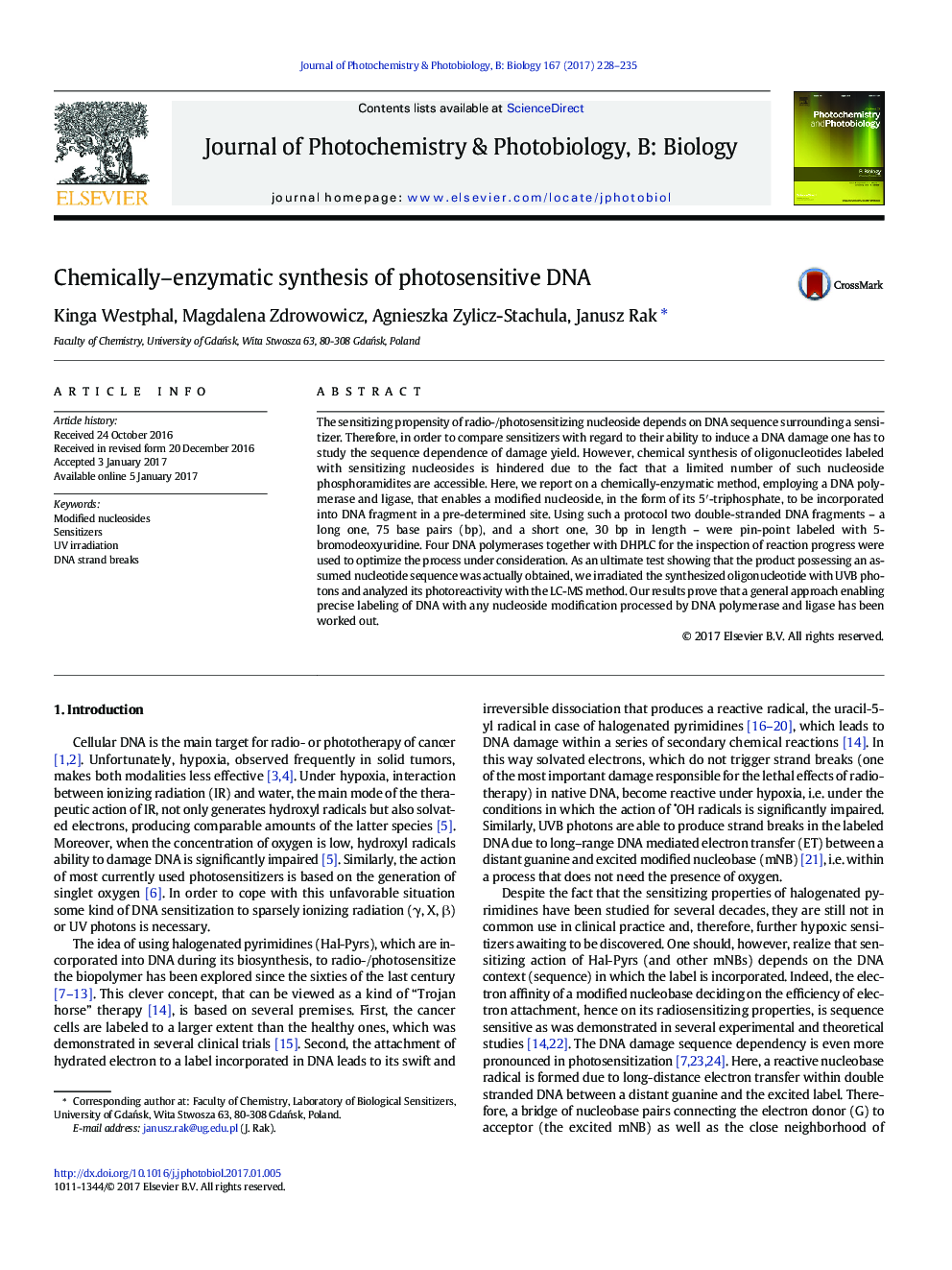| کد مقاله | کد نشریه | سال انتشار | مقاله انگلیسی | نسخه تمام متن |
|---|---|---|---|---|
| 4754721 | 1418066 | 2017 | 8 صفحه PDF | دانلود رایگان |

- A photoinduced strand break is formed in double-stranded DNA labeled with 5-BrdU.
- High-resolution MS is employed to identify reactant DNA and product fragments.
- A simple protocol employing two enzymes enables labeling of arbitrary DNA sequence.
The sensitizing propensity of radio-/photosensitizing nucleoside depends on DNA sequence surrounding a sensitizer. Therefore, in order to compare sensitizers with regard to their ability to induce a DNA damage one has to study the sequence dependence of damage yield. However, chemical synthesis of oligonucleotides labeled with sensitizing nucleosides is hindered due to the fact that a limited number of such nucleoside phosphoramidites are accessible. Here, we report on a chemically-enzymatic method, employing a DNA polymerase and ligase, that enables a modified nucleoside, in the form of its 5â²-triphosphate, to be incorporated into DNA fragment in a pre-determined site. Using such a protocol two double-stranded DNA fragments - a long one, 75 base pairs (bp), and a short one, 30Â bp in length - were pin-point labeled with 5-bromodeoxyuridine. Four DNA polymerases together with DHPLC for the inspection of reaction progress were used to optimize the process under consideration. As an ultimate test showing that the product possessing an assumed nucleotide sequence was actually obtained, we irradiated the synthesized oligonucleotide with UVB photons and analyzed its photoreactivity with the LC-MS method. Our results prove that a general approach enabling precise labeling of DNA with any nucleoside modification processed by DNA polymerase and ligase has been worked out.
Journal: Journal of Photochemistry and Photobiology B: Biology - Volume 167, February 2017, Pages 228-235